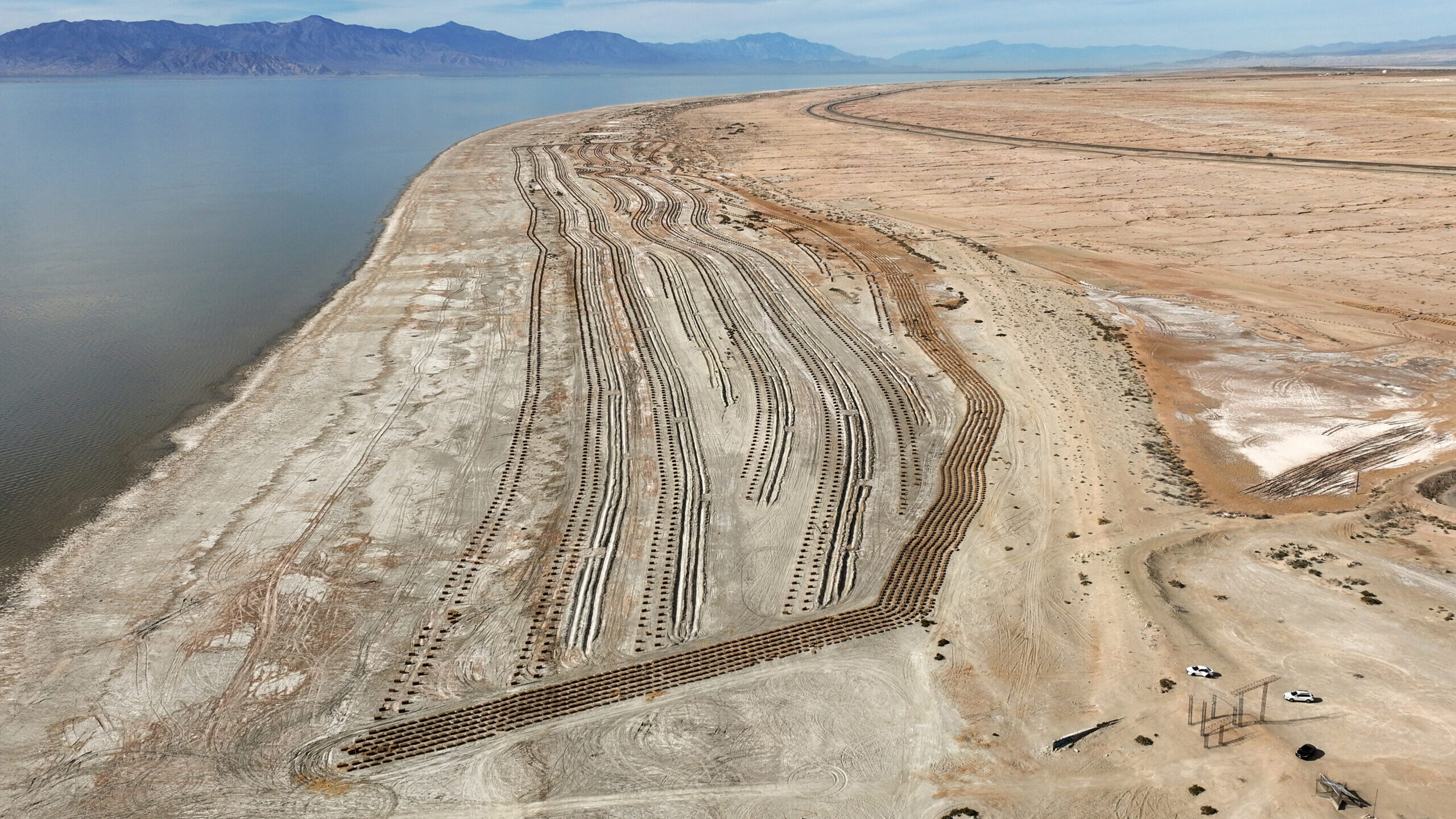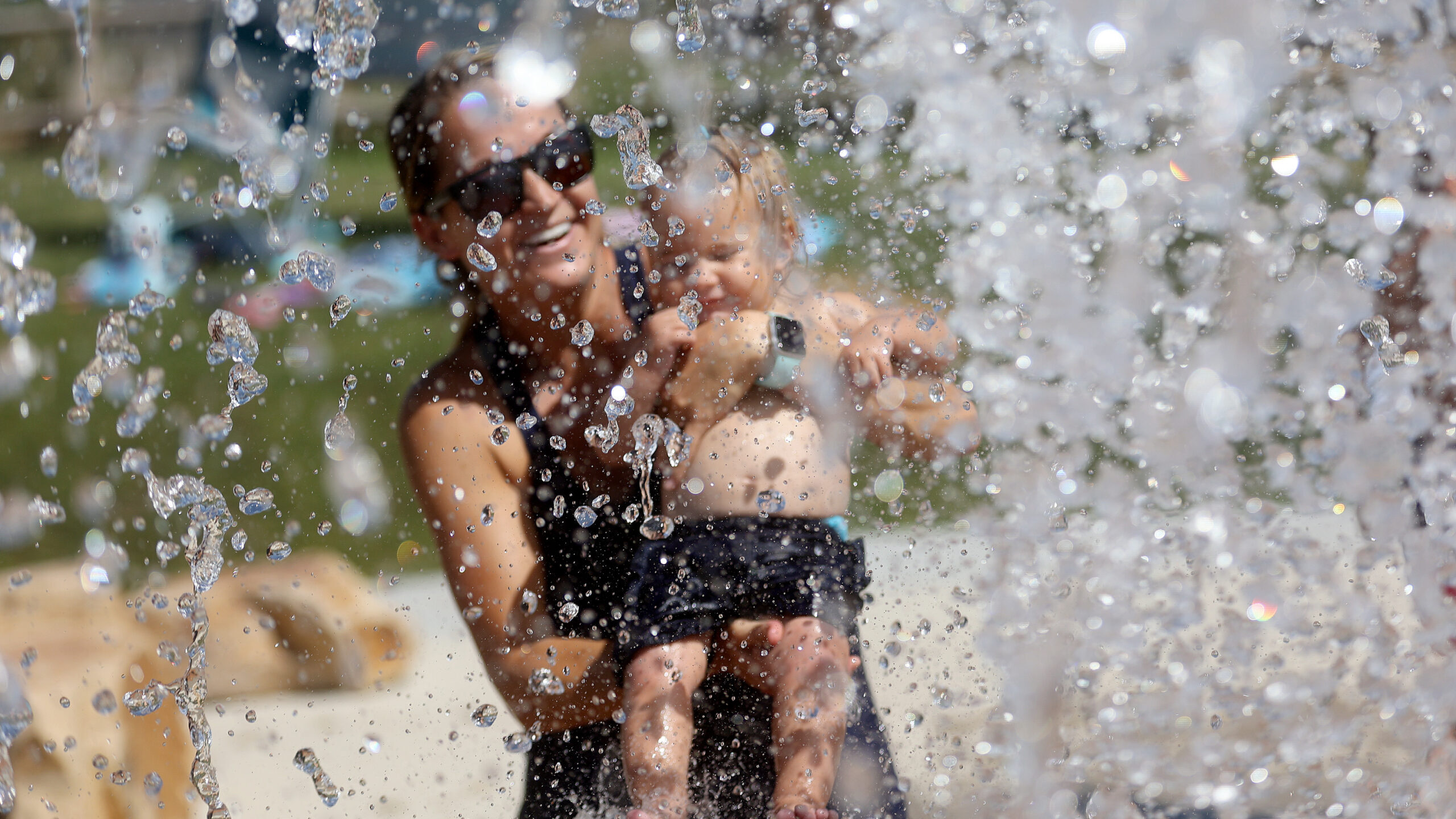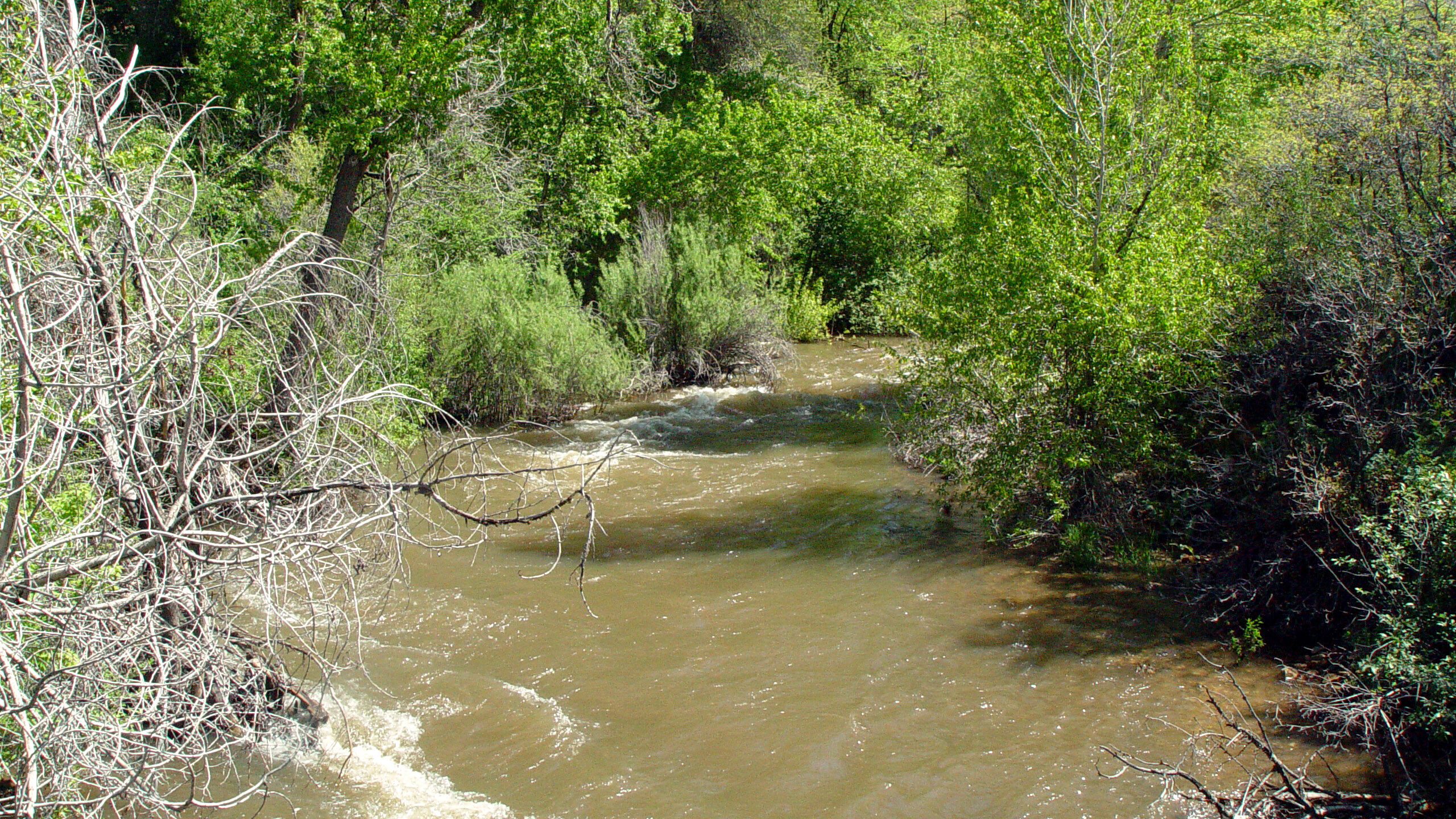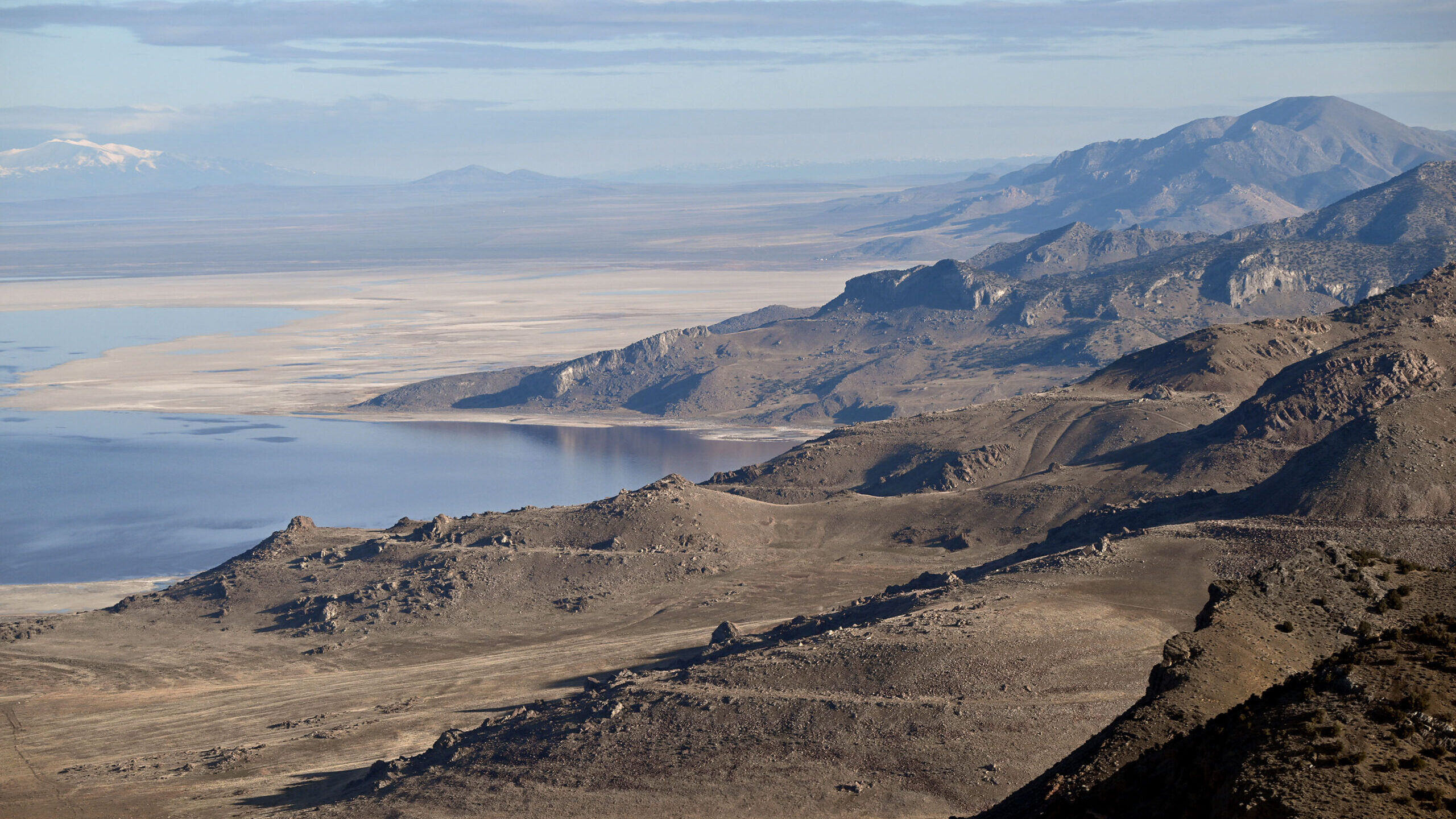Great Salt Lake sinking levels could impact bird migration
Apr 13, 2022, 9:48 PM | Updated: 10:01 pm
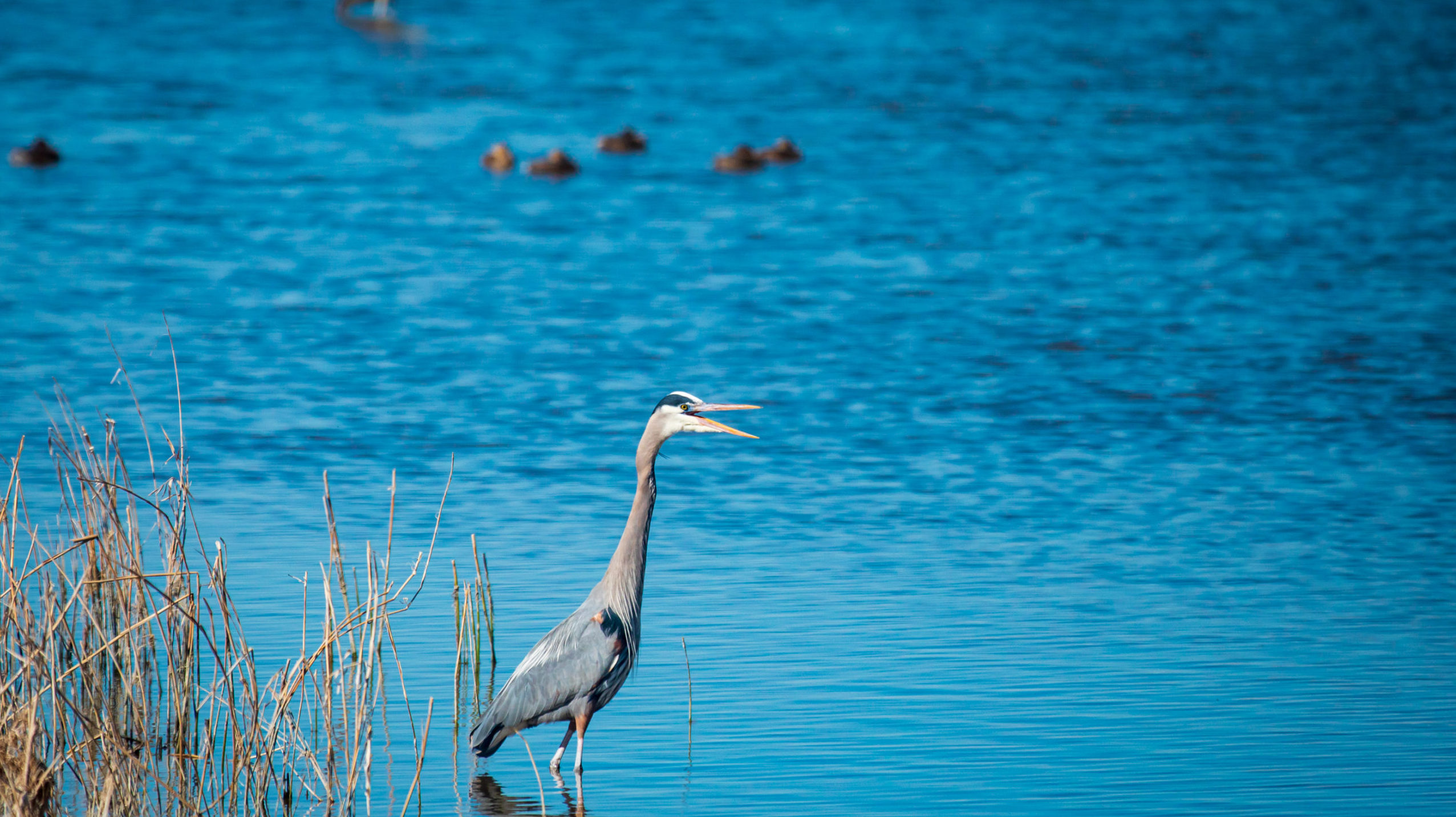
Birds use the Farmington Bay Area as one of several migratory areas for birds at the Great Salt Lake on Feb. 2, 2022. (Carter Williams/KSL)
(Carter Williams/KSL)
This article is published through the Great Salt Lake Collaborative, a solutions journalism initiative that partners news, education, and media organizations to help inform people about the plight of the Great Salt Lake.
BOX ELDER COUNTY, Utah — The drying up Great Salt Lake could have dire consequences for the birds migrating through the area.
It’s not as simple as the lack of water, though, there are a few different things at play.
It’s about the food sources on the Great Salt Lake
“What happens is the birds that come here, and most of them are coming here for the food sources,” said John Luft, the Great Salt Lake Ecosystems Project Manager. “When you talk about shorebirds, that’s mostly aquatic invertebrates. And when you’re talking about waterfowl, it’s mostly aquatic vegetation. When there is no water, basically you’ve reduced the amount of available forage habitat for those birds.”
Luft says this is most noticeably happening in the bay areas. Areas like Ogden Bay, Farmington Bay and Bear River Bay — the latter being home to the nation’s first bird migratory refuge. And some of those areas have been dry for years, according to Luft.
“In fact, the Bear River supplies, I think, over 70% of all of the inflow from the rivers into the Great Salt Lake, and last year, probably six months ago, it had zero water coming through,” said Luft. “It’s supposed to be supplying the majority of the water going into the Great Salt Lake and it has nothing.”
He says that Bear River Bay was especially dry during times in the spring and fall when bird migration rates are at their highest.
It’s also about the habitat itself, food aside. Birds are not only having a hard time finding plants or fishing out brine shrimp, but they’re also competing for space, fighting against predators and having to deal with invasive species.
Some birds are going somewhere else
“Anecdotally, I can say for sure, we’ve seen a reduction and bird-use days on the Great Salt Lake,” Luft said. “And by that, I mean, even if we’re seeing the same species and the same birds that are coming to the Great Salt Lake, they’re spending far less time here because they’re not being able to get the forage that they need, just because the habitats been reduced.”
The lack of water in the habitats doesn’t allow aquatic vegetation to grow, so the birds that eat plants out of the water are out of luck. And, therefore, they’re not coming to the lake.
So, the big takeaway is the less water, the less food — at least for some birds. But all of that is to say… there aren’t necessarily fewer birds. But, if the birds eat the state crustacean — the brine shrimp — that’s good news for them. The lower water levels make it a little easier to fish if the birds can stand the more concentrated salinity.
But some birds are flocking to the Great Salt
“Some species of birds have increased here — which sounds like a good thing, but it’s actually a little counterintuitive,” he said. “We’re starting to hit that kind of threshold where we’re going to have some difficulties.”
Many of those other birds come from other saline lakes, like Mono Lake on the edge of the Sierra Nevadas in California. Levels at that lake have been dropping up for some time, meaning the birds that would normally use that lake on a migration path, end up in the Great Salt Lake instead.
For example, Luft estimated around 90% of the entire North American population of the eared grebes have ended up coming to the Great Salt Lake. This is mostly because of the brine shrimp fishery.
“If we had over a million eared grebes here during the winter, that would be a high number,” Luft said. “Now we’re seeing over 4 million eared grebes during the wintertime. Sometimes close to 5 million.”
Why flocking birds are not good news
“It’s kind of like putting all your eggs in one basket,” Luft said. “It puts birds in an area that are all in the same area and makes them more susceptible to like disease or huge crashes because of a lack of forage.”
Disease outbreaks are something the lake is familiar with. Back in 2008, over 15,000 birds died near the lake from avian cholera. Compounding the lack of plants for forage are the invasive species phragmites taking up productive habitats for other vegetation.
Luft and his colleagues have also observed a decline in nesting birds, particularly redhead ducks and cinnamon teal.
And all those pelicans you see nesting on Gunnison Island aren’t nesting as much.
“Mostly because it’s not an island anymore, and they have had mammalian predators — particularly coyotes — visit the island and disturb those birds,” Luft said. “The last couple of years we’ve seen, probably the last five, we’ve seen a significant decrease in the number of young pelicans produced out there.”
And it turns out that as there are fewer big fish to feed on, birds like bald eagles are turning to ducks for sustenance.
It’s not all doom and gloom for the Great Salt Lake
While it all sounds like an apocalypse waiting to happen, especially when you factor in the possibility of toxic dust and worsening air quality, Luft is really encouraged by the steps lawmakers took during the legislative session aimed at helping the drought situation at the lake — from a change in water law to a good chunk of change set aside for conservation efforts.
“Our lawmakers have now recognized that the lake is in peril and it really affects all of us.,” Luft said. “Not just the birds, but all the people along the frontier as well.
“I haven’t seen as much activity and interest and recognition of the lake since I’ve lived here, so that’s that was at least a positive note.”


